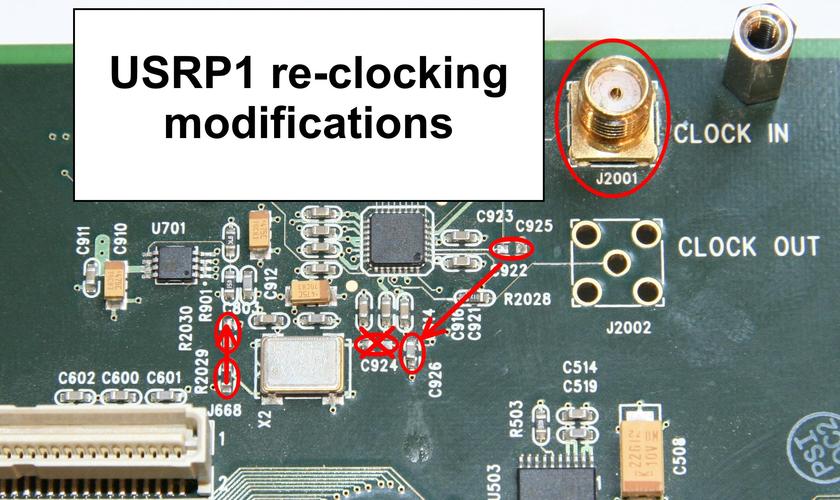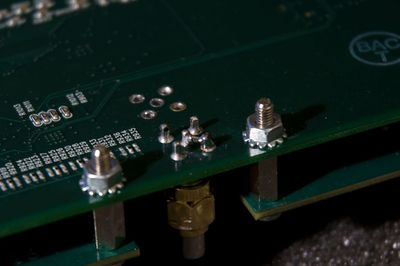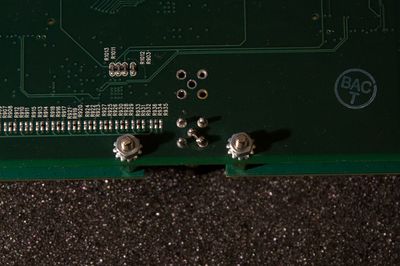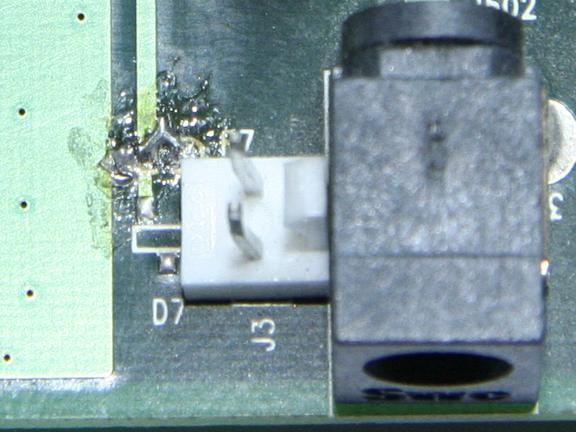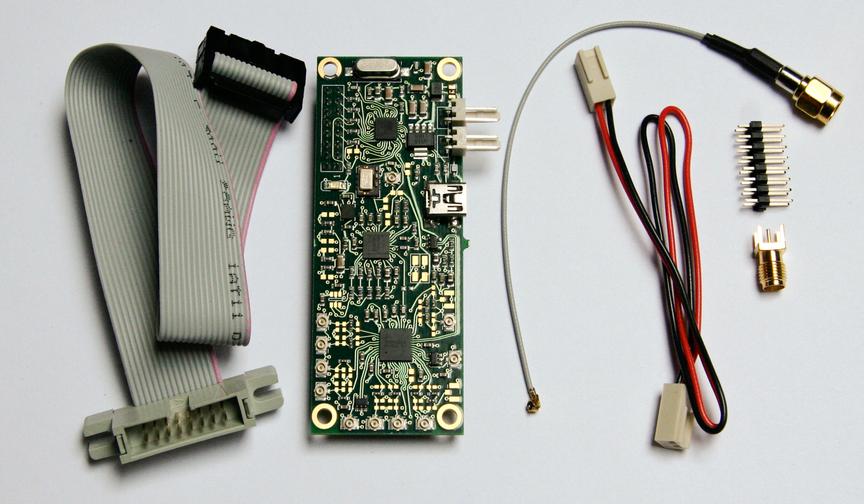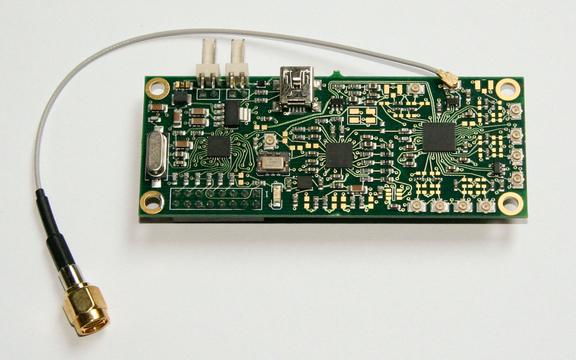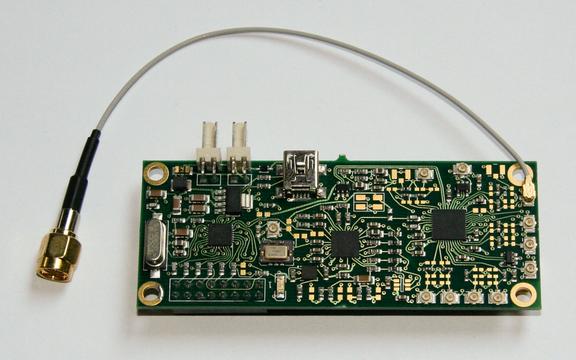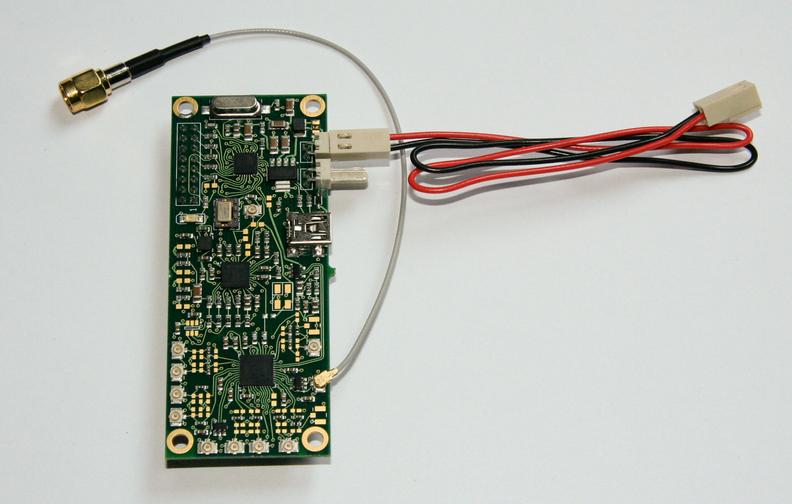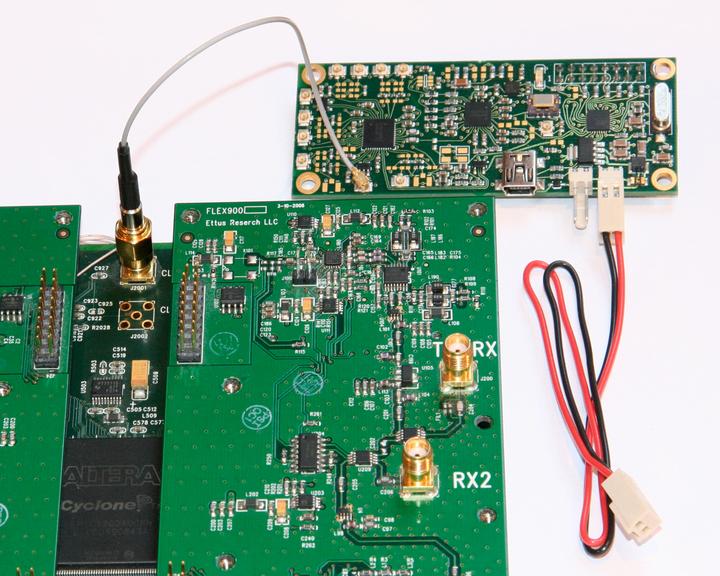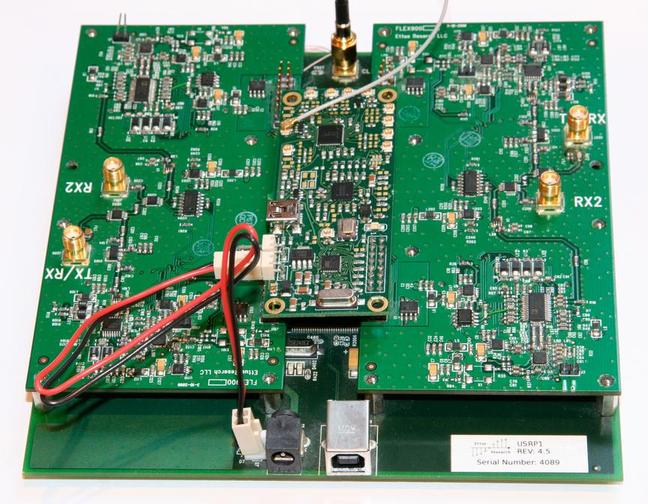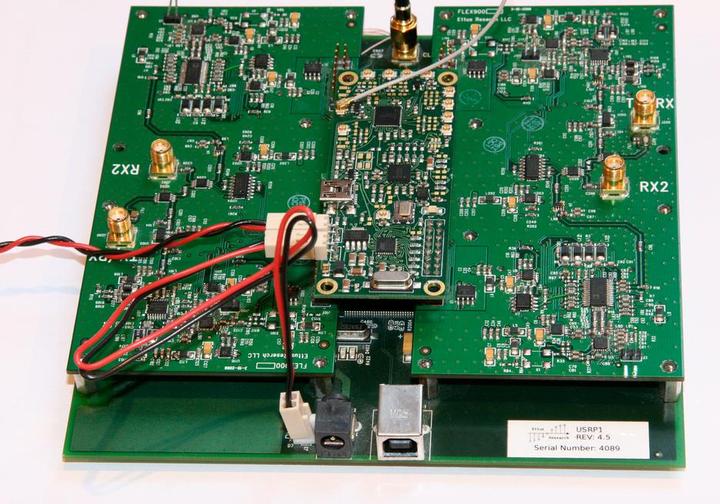ClockTamerUSRPInstallation
USRP 2, N2x0, E1x0 and B1x0
This page focuses on connecting ClockTamer to a USRP1. However, you can use ClockTamer with USRP 2, N2x0, E1x0 and B1x0 also, but we do not provide detailed instructions for these. In general, to use ClockTamer with USRPs other then USRP1, you should connect it to "10MHz external reference" input and configure ClockTamer to output 10MHz.
USRP1
Proper installation of a ClockTamer in a USRP1 requires the following steps:
- USRP1 modification to disable the internal clock reference and enable external clock input.
- Proper termination of the USRP1 clock input.
- 16-pin connector installation on a RFX daughter board (optional).
- R**7 current limiting resistor removal (optional).
- ClockTamer installation on a USRP1.
These steps are described in further detail below.
USRP1 modifications
Re-clocking
According to Synchronizing multiple USRP1s on USRP wiki (the bullet "For the slave boards") you should carry out the following modifications in order to connect an external clock:
- Solder an SMA connector into J2001. This is the clock input. Be careful when soldering the SMA connector so you don't break the delicate trace from J2001 to C927.
- Note that you won't be able to fit a TVRX in the RXB slot anymore once you do this.
- Move R**2029 to R**2030. This disables the onboard clock. R**2029/R**2030 is a 0-ohm resistor. This step is not strictly necessary.
- Move C925 to C926.
- Remove C924.
Terminating clock input with 50 Ohm resistor
We strongly encourage you to install 50 Ohm termination resistor on USRP side no matter whether you use the ClockTamer CMOS or half-LVDS output (read below how to do this). If you use a CMOS output of ClockTamer then everything will likely work without a terminating resistor and we're not aware of any USRPs having been due to absence of this terminating resistor. However, such usage is out of specs. Don't blame us if you adamage your USRP by using ClockTamer without installing the terminating resistor on USRP1! If you plan to use a half-LVDS output of ClockTamer, then a terminating resistor is a must to get it working. Using half-LVDS output without a proper terminating resistor at J2001 will result in signal bouncing and USRP1 will not be able to lock to the clock.
Note: You must solder termination resistor to USRP near the clock input connector J2001. If you solder 50 Ohm resistor to ClockTamer instead of USRP, it will not work.
"50 Ohm resistor" is a term often used in RF discussions and usually means resistors with a nominal close to 50 Ohm. Both 49.9 Ohm or 51 Ohm resistors are ok. We typically use 51 Ohm resistors in our setups.
Below are pictures of our method of soldering an terminating resistor to J2001. If you find a better/safer way - please let us know (and send us pictures if possible!)
(click for larger versions)
RFX900/RFX1800 16-pin connector
If you have an RFX daughterboard it most likely will not have J24, a 16-pin connector soldered. You may wish to solder the provided connector to J24 in order to secure the ClockTamer inside of the USRP1. This is not strictly required and ClockTamer will perfectly work without this connector.
The J24 connector may also be used to communicate with ClockTamer without a Mini USB cable, but this feature is in beta and is not recommended for new users.
Fan connector's current limiting resistor
If you want to power your ClockTamer from the USRP1's fan connector, and still be able to power the fan, you have to replace a current limiting resistor R**7 with a 0 Ohm resistor or a short circuit. This resistor is located right next to the fan power connector, J3. The image below shows the location of the R**7 resistor with a short circuit instead of the actual resistor. The soldering shown is quite rough and we know you could do better :)
ClockTamer installation
Package contents
The ClockTamer package should contain the following items:
- Flat ribbon cable. This can be used to connect a ClockTamer to an RFX daughter board connector if you locate the ClockTamer remotely. It will not be used in this manual, since the normal method is to place ClockTamer directly on the RFX board connector (see below).
- ClockTamer itself. If your ClockTamer is GPS enabled it will have a female U.FL pigtail attached to it (not shown on the picture below). The female U.FL pigtail is used to connect ClockTamer to a GPS antenna.
- Male U.FL pigtail. Used to connect ClockTamer to the USRP1 clock input.
- 2-wire power cable.
- 16-pin connector to solder to an RFX daughter board.
- SMA connector to solder to USRP1 clock input.
- GPS antenna (only if ClockTamer is GPS-enabled, not shown on the picture below).
Connecting the pigtail
First, connect the male U.FL pigtail to the ClockTamer as shown in the pictures below. Only CMOS output #1 is enabled by default, and thus it requires less effort from you to get your setup working. We strongly encourage you to use it. If you want to enable other outputs, you can do this with the GUI or manually with the control protocol.
Make sure to connect the pigtail securely; a loose connection may lead to bad performance or non-responsive USRP.
Picture of the pigtail connected to output #1 - the default CMOS output.
Picture of the pigtail connected to output #0 - a half-LVDS output. You have to enable this output before using it (see above).
Connecting power cord
Now connect the power cable to the ClockTamer. The power connectors are routed directly to each other, to allow "chained" connection of the second load, e.g. another ClockTamer or a fan. Thus you can connect the power cable to any of the power connectors — both will work.
Connecting to a USRP1 clock input
Next connect ClockTamer to the USRP1 clock input, as shown on the picture below. Make sure to tighten the connector securely.
Placing ClockTamer and power connection
This step is pretty easy. Just place ClockTamer as shown in the picture below to secure it inside of the USRP1, and connect the power cable to the USRP1's fan connector. If you don't have J24 connector, you must find some other place for your ClockTamer to be secured. If you do so, take great care to not short-circuit the ClockTamer or the USRP1.
Connecting the USRP1's fan
If you have removed the power limiting resistor from the fan power connector (see above), then you can connect the USRP1's fan to the ClockTamer as shown on the picture.
Testing
- Power on your USRP1.
- If the ClockTamer is NOT connected to mini USB, it should NOT have its LED illuminated. If the ClockTamer is connected to mini USB, its LED should blink once and then light continuously.
- One of the USRP1's LEDs should blink fast.
- Use an application from GNU Radio or UHD to check that you can get data from your USRP1 or send data to it as usual. We prefer to use usrp_fft.py for this purpose.
| |||||||||||||||||||||
